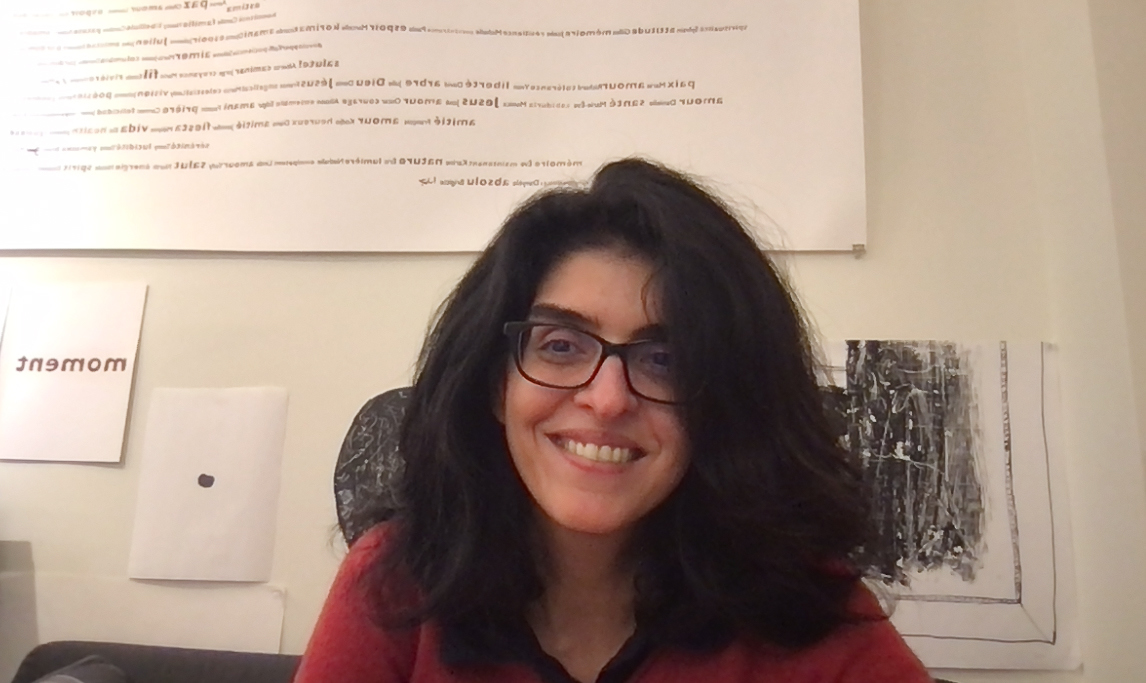Art is often imagined living behind the walls of galleries. However, through a public art program in Ottawa, many local artists are submitting their work in the hopes of bringing it into more common public spaces.
Local artist Mana Rouholamini’s being | née | être | born is currently on display at Corridor 45|75 in the Rideau LRT station. Her work is part of one of three public galleries managed by the City of Ottawa’s Public Art Program.
Rouholamini said she has always been interested in the concepts of language and meaning, which are major themes in her work. When she sat down to create being | née | être | born, Rouholamini said she faced a new challenge: designing art for a public space.
“There was this allure of thinking about not only the work but also thinking about the space,” Rouholamini said.
She added that creating her art for a space that people walk through made her rethink her artistic approach.
“How can I catch people’s attention? As somebody who walks in a city, we all have this relationship with where we walk,” Rouholamini said.

“It’s the people who are walking by that gives it meaning,” Rouholamini said. “The people are also not necessarily conscious that they’re giving meaning to that space.”
According to Meaghan Haugian, a public art officer at the City of Ottawa, being | née | être | born redefines the meaning of the space it occupies.
“I think having the art in LRT stations is helping to enrich your experience. And breaking up that kind of monotony of our day-to-day commute,” Haugian said. “To me, it’s about quality of life.”
Before artists can display their work in Ottawa’s public art galleries, they have to submit an exhibition proposal to the public art program, which is then reviewed by a committee of local curators, art professionals and artists.
Although Haugian isn’t on the committee, she said the selection process is challenging.
“The proposals were only a couple pages long but then you’re looking at the images and you’re reflecting on it,” Haugian said. “It’s hard because there’s so many artists in the [Ottawa] community.”
Haugian added that putting art in public spaces allows galleries to showcase the diversity of local talent in Ottawa. She said this is especially important given how hard it can be for artists to get into exhibitions.
“I know there’s a lot of artists and not enough galleries in the city,” Haugian said. “So to have an opportunity to do this is exciting.”
According to Yves Laberge, a sociologist and part-time art professor at the University of Ottawa, there is a split opinion on the importance of public art.
“Some people would say it’s the least important thing in our society,” Laberge said. “Others will say no, it’s through art culture that we can recognize who we are as a society.”
Laberge said that public art is essential for nation-building, but it’s only effective if the public actively seeks to understand the work on display.
“You need to have some explanation because the work in itself is not enough to communicate the whole message imagined by the artist,” Laberge said.
Whether or not public art requires an explanation to serve its purpose, it continues to contribute to Ottawa’s cultural identity, according to Rouholamini.
“I feel that the city is a living being—it’s not static. And for that living being there are many things that you need,” Rouholamini said. “An interesting city cannot exist without culture.”
Featured image by David Barbour via Mana Rouholamini.






